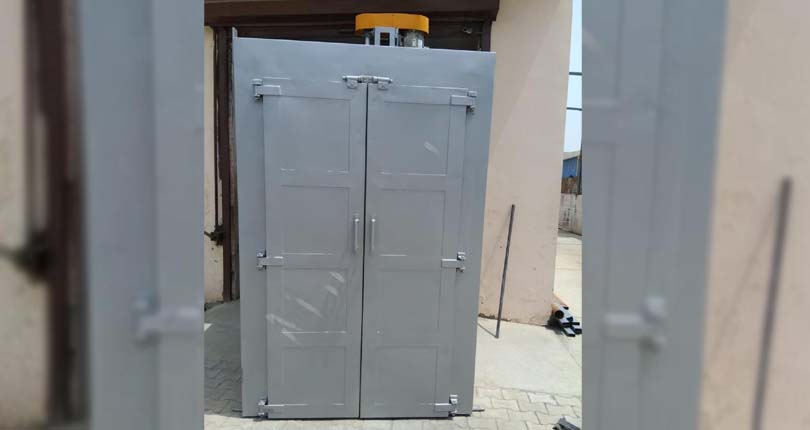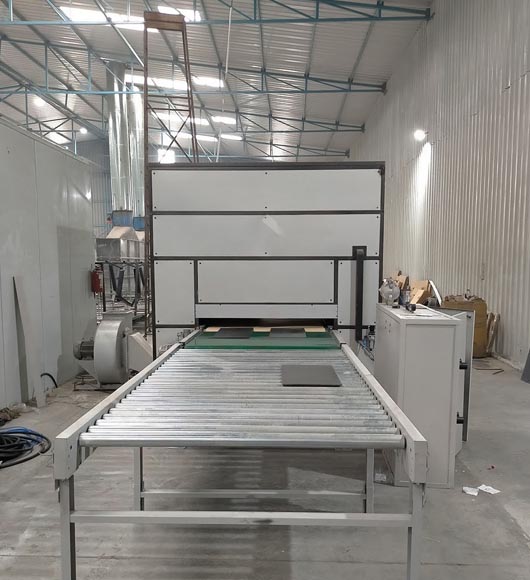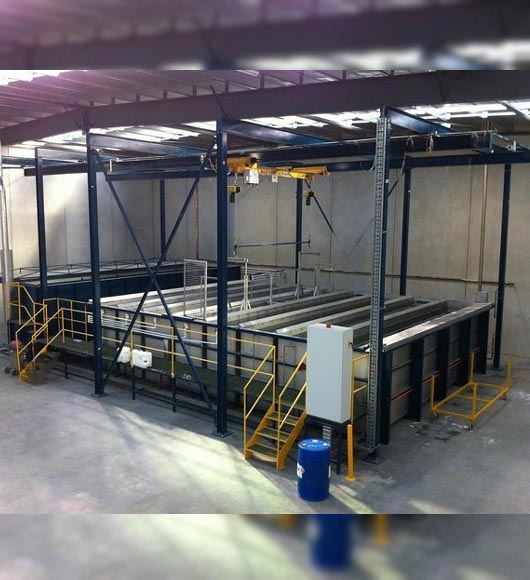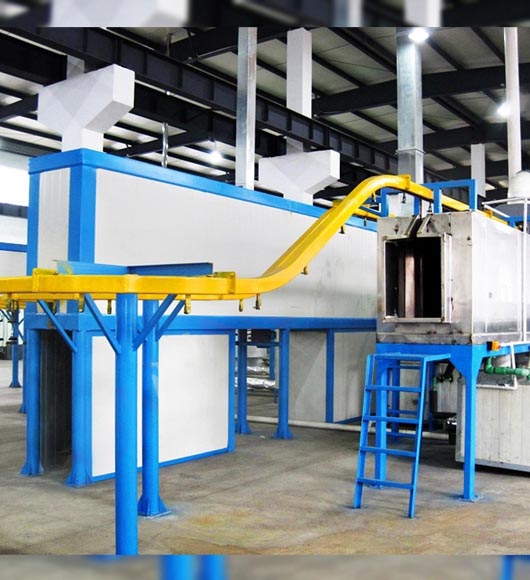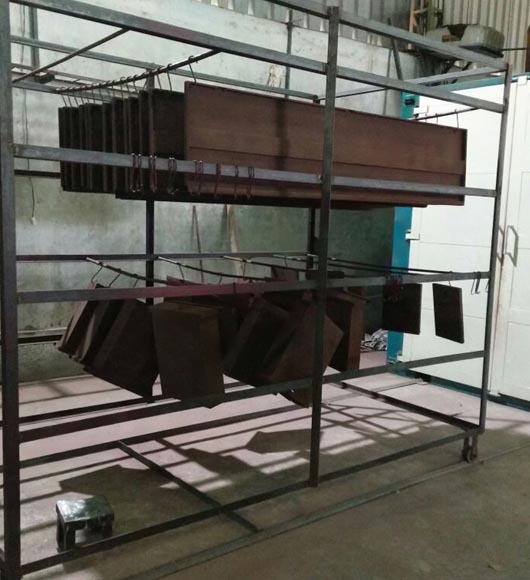Composite curing oven
A composite curing oven is used to cure, anneal, dry, and harden synthetic and composite materials. The curing process for these composite materials frequently includes bagging and putting them under a vacuum while being cured. Each composite curing application is unique and GBM Oven’s experienced team designs and manufactures high-performance ovens to meet each customer’s specific process requirements.
These out of autoclave (OOA) composite curing ovens are available electrically heated, gas-fired, or indirect gas-fired. As a standard, they are designed with a combination airflow arrangement which ensures even & uniform heat distribution throughout the work chamber and provides quicker heating rates and recovery times. They are typically guaranteed and certified for ±5° at 350° C temperature uniformity, but other tolerances and certification at other temperatures are available. Upon request, a Computational Fluid Dynamics (CFD) analysis can be used to optimize airflow, heat transfer, and overall oven performance.
OUT OF AUTOCLAVE COMPOSITE CURING OVENS
Out of Autoclave has become more popular as a cost-effective alternative to high-pressure autoclave composite curing. OOA processing removes the need to pressurize the entire chamber by using vacuum bag only (VBO) technology with tight vacuum tolerances. GBM Oven OOA industrial ovens allow you to cure various materials of complex contours, shapes, and sizes all while providing fast heat-up rates and cycle times, superior temperature uniformity, and an optimal cure.
Features
- 1000 Standard Sizes (Custom sizes to meet your specific process requirements are available)
- Gas Fired, Indirect Gas Fired or Electrically Heated
- Maximum temperature rating – 500° C
- Heavy duty construction with quality components
- Factory adjusted and tested PRIOR to shipment
Application
Composite Curing: Composites are a reinforcing fiber in a polymer matrix that commonly needs to be cured to set the matrix. Many industries such as transportation, construction, marine, infrastructure, and aerospace, have realized the benefits of composites. Companies in the aerospace and automotive industries are using composite materials to help make their products lighter, faster, and more fuel-efficient.
Options
- Vacuum ports, piping, & pumps
- Pressure transducers
- Thermocouple jack panels for monitoring part temperature
- Digital programmable controllers
- Chart recorders, data acquisition devices & systems
- Motorized dampers for enhanced heating and cooling capabilities
- Process Timer
- Access ports
- Many other options available upon request
Benefits
- Quicker Heating Rates and Recovery Times: Using a high pressure recirculation blower to deliver heat through a combination airflow arrangement to ensure uniform heat distribution throughout the work chamber.
- Excellent Temperature Uniformity & Heating Rates: Typically guaranteed and certified for ±5° at 250° C temperature uniformity prior to shipment. Other tolerances are also available.
- Lower Installation & Start-Up Costs: All units are fully factory assembled, tested, adjusted, and certified PRIOR to shipment through an extensive quality inspection.

